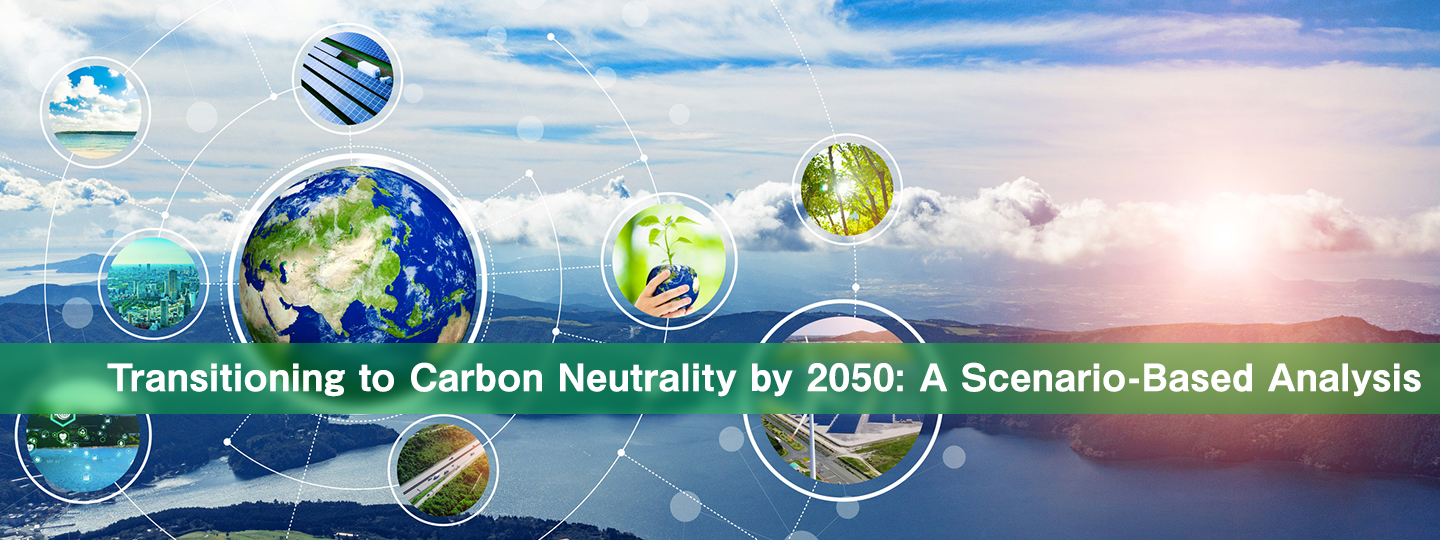Transitioning to Carbon Neutrality by 2050: A Scenario-Based Analysis

To understand based on quantitative assessments, possible pathways towards carbon neutrality in automotive transport by 2050, the Japan Automobile Manufacturers Association (JAMA) commissioned the Institute of Energy Economics, Japan1 to analyze three scenarios (in addition to a “business-as-usual” or BAU scenario) which took into account different circumstances between developed and emerging economies, including the anticipated pace of adoption of BEVs and the projected amounts of carbon-neutral fuel use, among other factors.
The results obtained in this analysis demonstrate that:
- Global CO2 emissions reductions in automotive transport can be in line with the Intergovernmental Panel on Climate Change’s 1.5℃ scenarios3 for 2050 with not only a rapid BEV conversion scenario,2 but also a scenario premised on the wide use of HEVs, PHEVs, and carbon-neutral fuels.
- In advanced economies, reductions to close to carbon neutrality by 2050 are possible under the three non-BAU scenarios. In emerging economies, where significant increases in new passenger car sales and in in-use vehicle fleets are anticipated, reductions in line with IPCC 1.5℃/2.0℃ scenarios are possible when CNF supply is increased within the extent of reasonable estimate.
JAMA believes that individual countries and regions should pursue carbon neutrality by following pathways tailored to their own particular circumstances, without narrowing down the options.
- An internationally recognized think tank in the energy field that conducts comprehensive surveys and research on energy, economic, and environmental issues in Japan and abroad.
- This is the International Energy Agency’s “Net Zero Emissions by 2050” or NZE scenario.
- The IPCC’s 1.5℃ scenarios have been scientifically validated, as analyzed in the Sixth Assessment Report of its Working Group III and presented in the Summary for Policymakers, based on studies involving more than 1,000 scenarios.
- Transitioning to Carbon Neutrality by 2050: A Scenario-Based Analysis (English) / (Japanese)
- Annex 1 : Advanced Economies Europe (English) / (Japanese)
- Annex 2 : North America (English) / (Japanese)
- Annex 3 : Other Europe/Eurasia (English) / (Japanese)
- Annex 4 : China (English) / (Japanese)
- Annex 5 : India (English) / (Japanese)
- Annex 6 : Asia-Pacific (English) / (Japanese)
- Annex 7 : Latin America (English) / (Japanese)
- Annex 8 : Middle East (English) / (Japanese)
- Annex 9 : Africa (English) / (Japanese)
- Annex 10 : World (English) / (Japanese)

